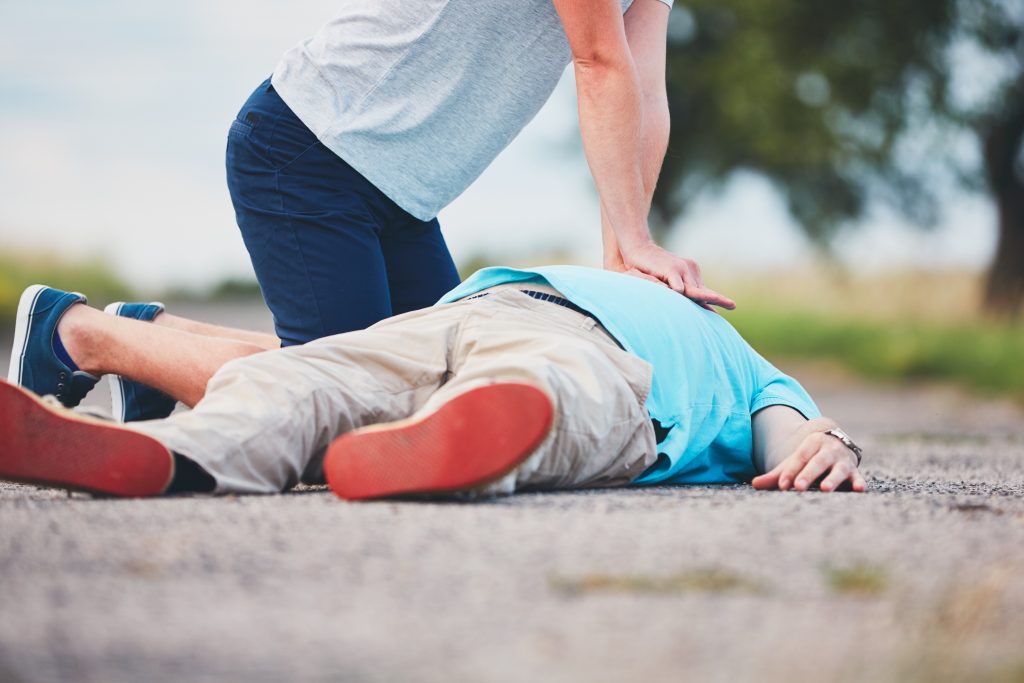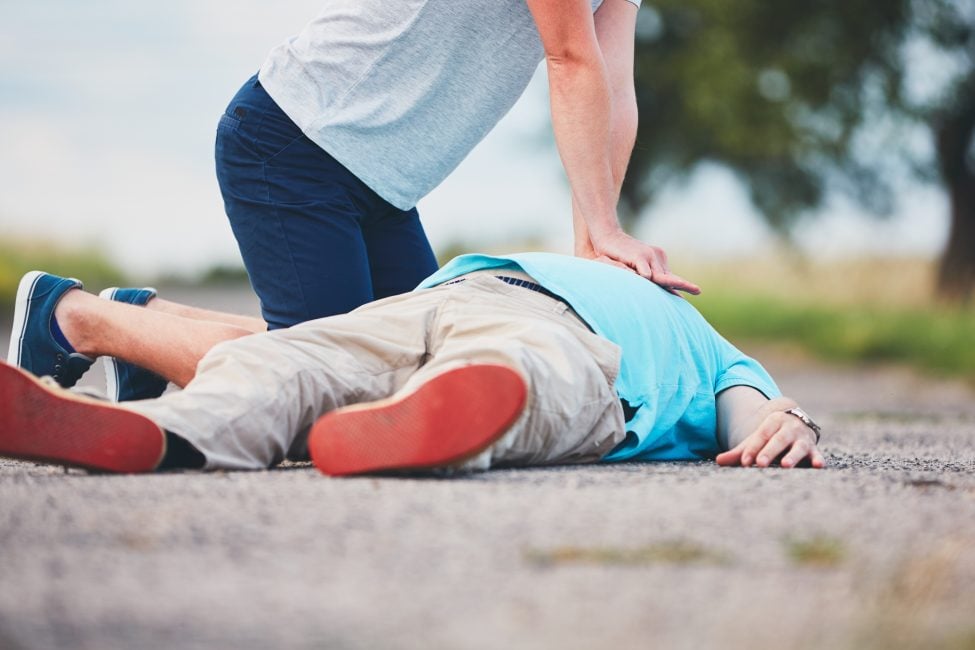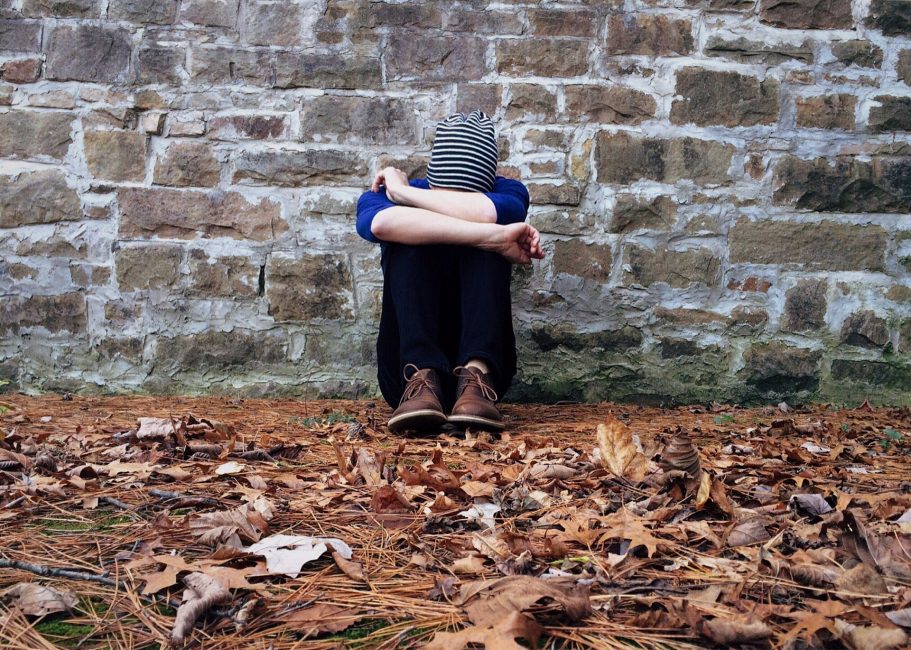In an emergency, there is no time to wait to be saved.
This is 2019. With natural disasters, shootings, and other acts of violence, there is much more to learn about first aid than the typical bloody nose or lightly cut finger.
There is also a growing demand for understanding mental health first aid. According to the American Foundation for Suicide Prevention:
In 2017, 47,173 Americans died by suicide and there were an estimated 1,400,000 suicide attempts.
Understanding first aid properly, to prepare for not only the major disasters but the dangerous incidents that occur in the home, has never been more essential to our lives.
How To Help Yourself & Others In An Emergency
Emergencies come in all shapes and sizes. While you may be with one or more individuals in an emergency, there are other circumstances when you are alone. It is not only important to know how to practice first aid on others, but be able to apply first aid on yourself.
Below are the top first-aid practices with strategies to help others in an emergency as well as yourself.
First Aid Best Practices
1) CPR: Practice makes perfect
According to CPR Certification HQ:
- More than 350,000 out-of-hospital cardiac arrests occur in the United States per year, out of which 70% happen inside homes.
- Effective CPR provided by a bystander in the first few minutes of cardiac arrest can increase the chances of survival by 2x or 3x.
- Less than 20 percent [of] Americans are equipped to perform CPR during a medical emergency situation. (AHA Study)
As stated above, understanding CPR is in high demand in many emergencies. While the Red Cross offers cpr certification classes all over the United States, here are the guidelines to help you get started.
CPR Guidelines according to Mayo Clinic:
- Check surroundings: make sure that the location is safe.
- Check to see if the individual is conscious; if he/she is NOT conscious, try to awaken the individual. This can be done by shaking them or speaking to them loudly.
- If possible, call 911.
- Lay individual down flat if the individual is not already in that position.
- Place both hands on the center of the individual’s chest in a fist-like manner with the palm of the bottom hand directly on the center of the chest. With both elbows straight and the upper body above the body, press chest 100x per minute with the width of the compression at 2”. Don’t continue to step 6 without previous CPR training. Continue this step until movement is noticed, or until medical assistance arrives
- After 30 chest compressions, tilt the individual’s head to ‘open the airway.’
- Pinch nose and give mouth-to-mouth breathing. After two breaths, perform 30 more chest compressions until movement is seen.
*Here is more information on how to perform these steps in more detail as well as how to perform CPR on a child.
This procedure can ONLY be done by others and not on oneself. It is always wise to travel with others to make sure that the CPR procedure can be done if needed in an emergency.
2) Stop Heavy Bleeding: It’s all about elevation and pressure
With small cuts, cleaning the wound and applying some Neosporin and a band-aid should do the job. However, what happens when the cut is so deep that there is no quick blood clotting and no band-aid large enough to fix the problem? Elevation and direct pressure is required.
After calling 911, Harvard Health Publishing advises:
Elevate the wound above the heart and apply firm pressure with a clean compress (such as a clean, heavy gauze pad, washcloth, T-shirt, or sock) directly on the wound. Call out for someone to get help, or call 911 yourself. Do not remove a pad that is soaked through with blood; you will disturb any blood clots that have started to form to help stop the bleeding. If blood soaks through, place another pad on top of the soaked one and continue applying direct pressure.
Make sure to keep the direct pressure and elevation to stop severe bleeding until further help from medical assistance.
This method can be applied on oneself if in an emergency. After calling 911, follow the procedure stated above in a safe location until further assistance arrives.
3) Treating Broken Bones: Stabilize
Broken bones can be a critical result of an emergency. It is important to know what to do if you or someone you are with is injured in this way.
How do you know if there is a broken bone involved?
Healthline gives the following symptoms:
- intense pain in the injured area that gets worse when you move it
- numbness in the injured area
- bluish color, swelling, or visible deformity in the injured area
- bone protruding through the skin
- heavy bleeding at the injury site
What to do if there is a broken bone:
- Contain bleeding, if there is any: Follow the instructions above to stop heavy bleeding before proceeding.
- Stabilize location of broken bone: This can be done with a simple sling for the arm created by a bandana, t-shirt, or cloth. If the broken bone is in the leg, use two firm structures such wooden sticks or boards, and tie them around the leg with a cloth or part of a t-shirt.
- Place something cold on the area to reduce the swelling. Don’t place directly on the area. Make sure it is underneath a cloth of some sort.
- If the individual is going through shock, lay them down and elevate legs.
This procedure can be done to oneself and to another person. Remember to always stay calm in the situation.
4) Treating Degree Burns
We all have dealt with some form of a degree burn in our lives. While some are minor and therefore require minor treatment, other burns can be deadly. It is critical to know what to do to successfully treat the minor burns as well as the major.
First-Degree Burn:
Most of these burns are caused when going out in the sun for too long without sunscreen. Sunburns are first-degree burns. They can be prevented by placing more sunscreen and can be treated by rubbing aloe vera on the burned area.
Second-Degree Burn:
Touching the stove, or touching a curling iron can cause a second-degree burn. These are called second-degree burns because they penetrate not only the first layer, but the second layer of skin as well. Treating these burns require cleaning the area and using antibiotic ointment and patiently letting it heal.
Third-Degree Burn:
These burns can be caused in more serious situations where the skin is burned past the second layer of skin through the nerves. Best Life illustrated the symptoms of third-degree burns on the skin as, “charred, leathery, or a waxy, white color.” It is critical to get medical assistance immediately and elevate the location of the injury.
Treating burns can be done on oneself and to others. It is important, however, to always seek medical assistance when there are deadly signs of the burn.
5) Heart Attacks
Heart attacks are very unexpected emergencies. It is crucial to be calm whether you or a loved one is in this situation.
The symptoms of a heart attack according to the Red Cross:
- persistent, vice-like chest pain, which may spread to their arms, neck, jaw, back or stomach
- breathlessness
- feeling unwell
- sweating
What to do if someone is having a heart attack:
- Call 911
- Take an Aspirin
- Apply CPR, if necessary. Use steps illustrated above for the procedure
- Apply AED, if available
Heart Attacks are impossible to treat by yourself. If you are dealing with a heart attack and no one is around, call 911 as soon as possible.
First Aid & Mental Health
Mental health first aid has risen in awareness in the past decade due to the increase in mental illness, such as depression and anxiety disorders. Suicide rates have also risen as stated in the beginning.
Here is what Mental Health First Aid has to say about what they do:
Mental Health First Aid at Work is a workplace mental health training program that teaches participants how to notice and support an individual who may be experiencing a mental health or substance use concern or crisis and connect them with the appropriate employee resources. Mental Health First Aid at Work is a skills-based, experiential and evidence-based practice.
Certification courses for mental health are offered here.
In the meantime, Mental Health First Aid offers the ALGEE Action Plan to aid someone who is dealing with substance abuse or a mental health issue.
APPROACH: This first step is all about acknowledging the problem and asking questions.
LISTEN: Mental Health First Aid stresses that this step is all about listening without judgment.
GIVE: Relieve and assist with comfort and information that can help them.
ENCOURAGE: Persuade and encourage them to get professional assistance.
ENCOURAGE: Teach them coping mechanisms that can help them until they receive professional assistance.
These steps cannot only help those helping others, but it can also aid an individual when they are dealing with a challenge on their own depending on the severity. It is always better to talk and work through these steps with someone else.
The information provided is for general interest only and should not be misconstrued as a diagnosis, prognosis or treatment recommendation. This information does not in any way constitute the practice of medicine, or any other health care profession. Readers are directed to consult their health care provider regarding their specific health situation. Marque Medical is not liable for any action taken by a reader based upon this information.



